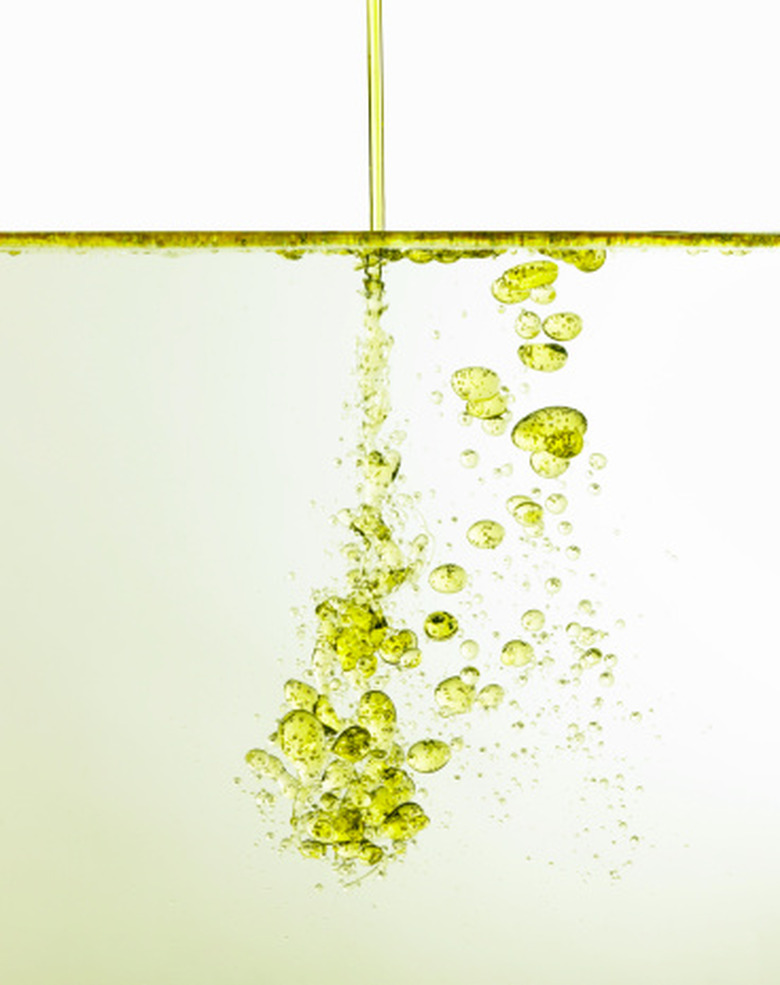Why Oil Won't Mix In Water?
Oil spills and salad dressings demonstrate an important scientific lesson: Oil and water do not mix. The reasons for this phenomenon relate to the smallest particles that make up each of these substances. The molecular structure of water and oil determines the way that they interact with each other. Contrary to popular belief, oil and water do not repel each other. A look at their most basic properties exhibits why they separate.
Polarity and Nonpolarity of Molecules
Polarity and Nonpolarity of Molecules
The interaction of water and oil results from the electrical charge of water molecules. A water molecule contains two hydrogen atoms and one oxygen atom, hence its scientific name "H20." The hydrogen atoms emit a positive electrical charge at one end of the molecule, and the oxygen atoms put off a negative electrical charge on the other side. For this reason, scientists label water molecules "polar." Oil molecules do not contain a charge, meaning they are nonpolar.
Attraction of Molecules
Attraction of Molecules
Atoms with a negative charge attract those with a positive charge. So, the negatively charged oxygen atom at the end of one water molecule attracts the positively charged hydrogen atoms at the end of another. They create a connection called a "hydrogen bond." Because of the electrical charge of water molecules, oil molecules exhibit a stronger attraction to water than they do toward other oil molecules. This is why oil tends to create a thin film when dropped in small amounts onto water. The oil molecules try to spread out to attach to water, rather than creating a tight ball of oil molecules attached to one another.
Water Molecules Stick Together
Water Molecules Stick Together
Because of their polarity, water molecules possess a stronger attraction towards each other than they do toward oil molecules. Oil molecules try to connect to water, but hydrogen bonds connecting water molecules together remain too strong to let them in. If pulled across the surface of water, oil will stretch out to a layer the thickness of one molecule since each oil molecule attempts to attach itself to water. If shaken in water, oil molecules form into separate balls because the bonds holding water molecules together will not easily break to let them in.
Why Oil Floats in Water
Why Oil Floats in Water
Since water molecules will not let oil molecules through their links to one another, oil gets pushed away from the center of water. You will not find a jar of water with oil located in the middle — water molecules will not separate to allow for this scenario. Water molecules exhibit a higher density than oil molecules, meaning that they weigh more. Because it is lighter, oil rises to the top. If stirred, oil and water always separate again with oil on top.
Cite This Article
MLA
Walden, Deborah. "Why Oil Won't Mix In Water?" sciencing.com, https://www.sciencing.com/oil-wont-mix-water-7996109/. 24 April 2017.
APA
Walden, Deborah. (2017, April 24). Why Oil Won't Mix In Water?. sciencing.com. Retrieved from https://www.sciencing.com/oil-wont-mix-water-7996109/
Chicago
Walden, Deborah. Why Oil Won't Mix In Water? last modified March 24, 2022. https://www.sciencing.com/oil-wont-mix-water-7996109/
